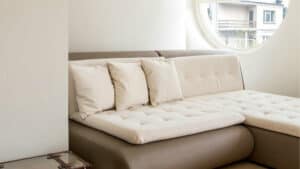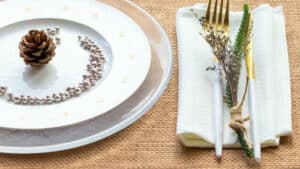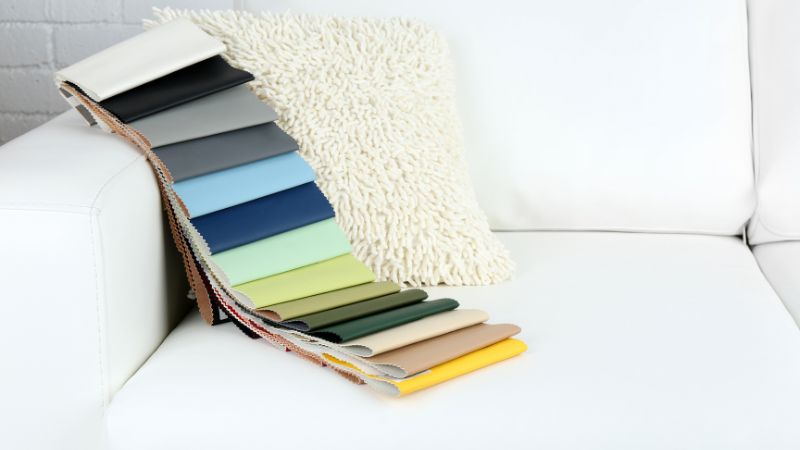
A couch is more than its looks—its material determines its longevity, comfort, and how well it fits your lifestyle. Have you ever found yourself torn between which couch material to choose? This guide will help you navigate the world of couch materials, ensuring you make a well-informed choice that suits your lifestyle and preferences. Let’s jump into the pros and cons of fabric versus leather, explore the types of fabric couch materials, and discover the best couch fabrics for your needs.
Fabric vs. Leather
When it comes to choosing a couch, two primary materials dominate the market: fabric and leather. Each has its unique advantages and drawbacks, making it crucial to evaluate which best fits your personal style.
The Fabric Couch
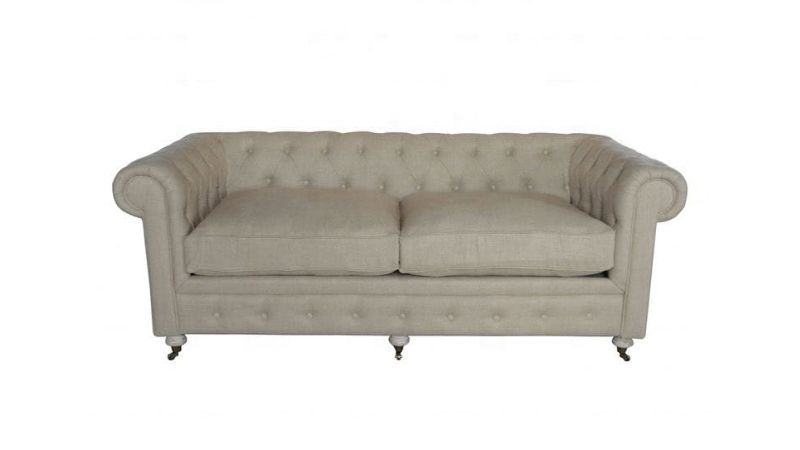
Fabric couches are a great choice for many households, offering versatility and comfort.
Pros
- Variety of Choices: You’ll find an extensive range of colors, textures, and patterns available in upholstery fabric.
- Comfort: Soft fabrics like velvet and linen are often more comfortable to sit on, especially for extended periods.
- Easy to Clean Options: Many performance fabrics are designed to be easy to clean and resistant to stains.
Cons
- Durability: While some fabrics are sturdy, others can wear out more quickly, especially in high-traffic areas.
- Maintenance: Depending on the material, some may require more regular cleaning or specialized care.
The Leather Couch
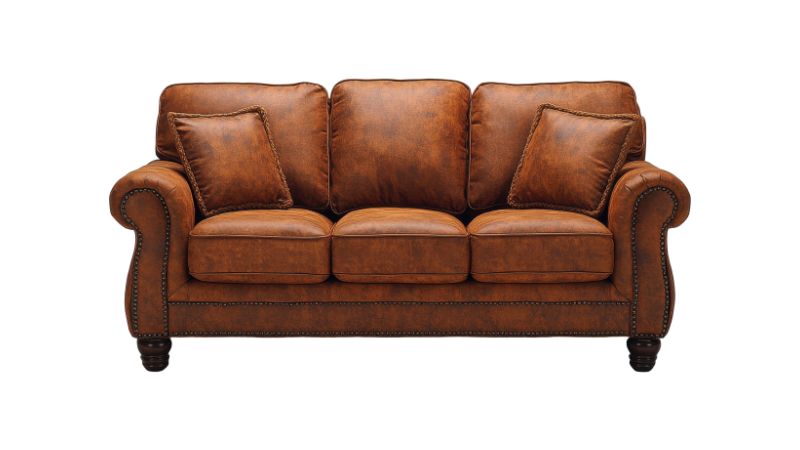
Leather couches remain a timeless choice, delivering both elegance and durability.
Pros
- Durability: Leather is often more resistant to wear and can last longer than many fabric options.
- Easy to Clean: Most leather can be wiped clean easily, making it a hassle-free choice for upkeep.
- Timeless Appeal: The look of leather continues to be popular, adding a sense of luxury to your living space.
Cons
- Cost: High-quality leather can be significantly more expensive than fabric alternatives.
- Temperature Sensitivity: Leather can feel hot in summer and cold in winter, which might not be comfortable for everyone.
Types of Fabric Couch Materials
Fabric options for sofas can vary widely, making it essential to know your choices:
Cotton
Cotton is a soft, breathable, and natural fabric that makes for a very comfortable couch. It’s popular because it feels cozy and comes in countless colors and patterns. However, pure cotton can wrinkle and wear down faster than other materials. It also stains easily because it absorbs liquids. For a better balance, look for cotton blended with synthetic fibers like polyester. This blend gives you the softness of cotton with extra strength and stain resistance, making it more practical for everyday use in a busy household.
Wool
Wool is a fantastic choice for a durable and family-friendly couch. This natural fabric is very strong and can handle a lot of use without showing wear. It’s naturally resistant to stains, static, and even flames. Wool is great at bouncing back to its original shape, so it doesn’t get permanent dents from sitting. While it can be more expensive and might feel slightly itchy to some, its toughness and easy-care nature make it a wise long-term investment for a sofa that needs to stand up to active children and pets.
Linen
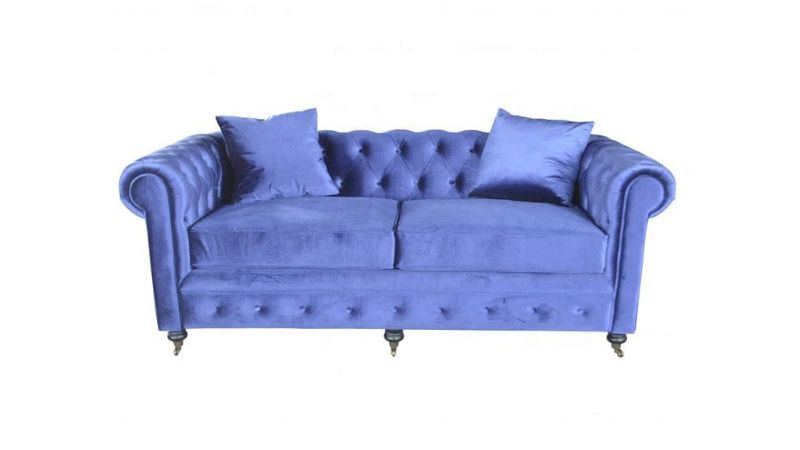
Linen, made from the flax plant, is loved for its cool, crisp feel and natural, textured look. It brings a light, airy elegance to any room. While it’s very strong, pure linen wrinkles easily and can be prone to staining and fading in direct sunlight. For these reasons, linen is often blended with other fibers like cotton or polyester for added durability and easier care. This blend allows you to enjoy linen’s beautiful aesthetic without the high maintenance, making it suitable for a living room that sees moderate use.
Polyester
Polyester is a synthetic workhorse known for its exceptional durability. Couches made from polyester are great for busy homes because they strongly resist fading, wrinkling, and staining. While it’s not as breathable as natural fibers, it holds its color and shape very well over time. It’s rare to find a 100% polyester couch; it is most often blended with materials like cotton or wool. As mentioned above, this combination gives you the softness of a natural fiber with the tough, easy-care benefits of a synthetic, creating a practical and long-lasting fabric option.
Nylon
Nylon is one of the strongest synthetic fibers you can find for a couch. It is highly resistant to abrasion, meaning it can withstand a lot of rubbing and sitting without pilling or wearing out. This makes it an excellent pick for sofas in high-traffic areas or homes with active kids and pets. Like polyester, it is often used in blends to add strength and resilience to other fibers. While not always the softest option on its own, its incredible durability ensures your couch will look good for many years.
Velvet
Velvet offers a luxurious and inviting feel, with a soft, plush pile that looks and feels rich. Modern velvets are often made from durable synthetic fibers, making them much more practical than in the past. The dense weave of velvet also helps to hide minor wear, while its deep colors add a touch of drama and warmth to a room. It’s a great way to add cozy elegance without sacrificing resilience.
Performance Fabrics
Performance fabrics are a special type of cloth made for sofas. They are designed to handle messy lives. Think of them as super-smart fabrics that are both tough and good-looking.
What makes them special is their ability to resist stains. Many have a secret shield that makes liquids like water or juice bead up on the surface. This gives you time to wipe the spill away before it soaks in. They are also great at fighting off smells and germs, which is perfect for homes with kids and pets.
The best part is that you don’t have to give up style for this easy care. These fabrics come in many beautiful colors and soft textures. So, you can have a lovely, cozy couch that you don’t have to worry about. It’s the perfect mix of looks and practicality for a busy home.
How to Choose the Best Material for Your Sofa
Choosing the right sofa material doesn’t need to be hard. The best choice depends on your lifestyle and what you need most. Here’s a simple guide to help you pick.
For Homes with Kids and Pets
If you have children or pets, you need something tough and easy to clean. Performance fabrics and leather are great choices. They resist stains and can be wiped clean quickly. Microfiber is another good option because it’s durable and simple to maintain.
If You Want Something Luxurious
For a fancy, high-end look, consider velvet or top-grain leather. These materials feel luxurious and make your living room look elegant. Keep in mind they might need a bit more care to stay looking their best.
When You’re on a Budget
If you’re watching your spending, polyester blends and microfiber are smart picks. They are affordable, last a long time, and come in many colors. You can also find good deals on bonded leather, but remember it may not last as long as other materials.
For Allergy Sufferers
If allergies are a concern, choose leather or tightly woven synthetic fabrics. These materials don’t trap dust and pet hair like some other fabrics can. They are easy to wipe clean, which helps keep allergens away.
Think About Comfort
If comfort is your main goal, soft fabrics like cotton, linen, or chenille are wonderful. They feel cozy and inviting. Just remember that some natural fabrics may wrinkle or stain more easily.
Finally, always ask for a fabric sample before you buy. See how it looks in your home’s light and feel it with your hands. This helps you make sure you’ll be happy with your choice for years to come.
FAQs
What are the pros and cons of fabric vs. leather couches?
Fabric couches offer comfort, variety, and easy-to-clean options, while leather couches are durable, timeless, and easy to maintain. However, fabric may wear out faster, and leather can be costly and temperature-sensitive.
Is leather or fabric better for hot weather?
Fabric is generally better for hot climates. Leather can feel sticky and hot in summer, while breathable fabrics like cotton and linen stay cooler. If you prefer leather, look for perforated or semi-aniline types that breathe better.
What types of fabric are best for couches?
The best fabric types include cotton for breathability, linen for durability, polyester for stain resistance, and performance fabrics designed for easy maintenance, making them suitable for families and pets.
How do I clean different sofa materials?
- Most fabrics: Vacuum regularly and use upholstery cleaner for spots
- Performance fabrics: Wipe with a damp cloth and mild soap
- Leather: Use specialized leather cleaner and conditioner
- Always check the manufacturer’s cleaning guide first
What’s the difference between chenille and velvet?
While both are soft textiles, chenille has a fuzzy, raised surface that’s durable and hides wear well. Velvet has a denser, plush pile that feels more luxurious but can show vacuum marks and wear patterns. Chenille is generally more practical for everyday use, while velvet makes a stronger style statement.
Conclusion
Selecting the right couch material is less about finding the single “best” option and more about discovering the most suitable one for your life. There is no universal winner among various materials; each home has its own champion. By thoughtfully weighing your lifestyle, comfort needs, and maintenance preferences, you can move beyond trends and identify the material that will not only enhance your space aesthetically but will also seamlessly adapt to the rhythms of your daily life. The perfect sofa is the one that feels made for you.




